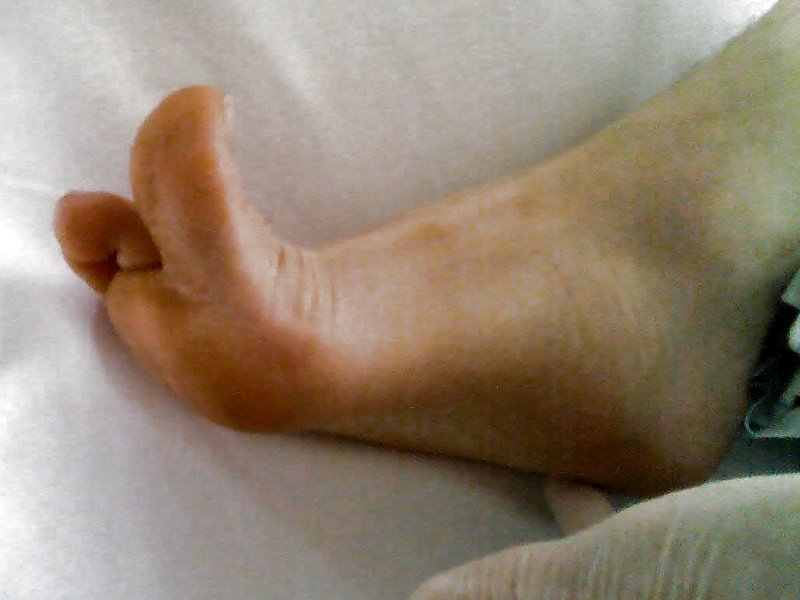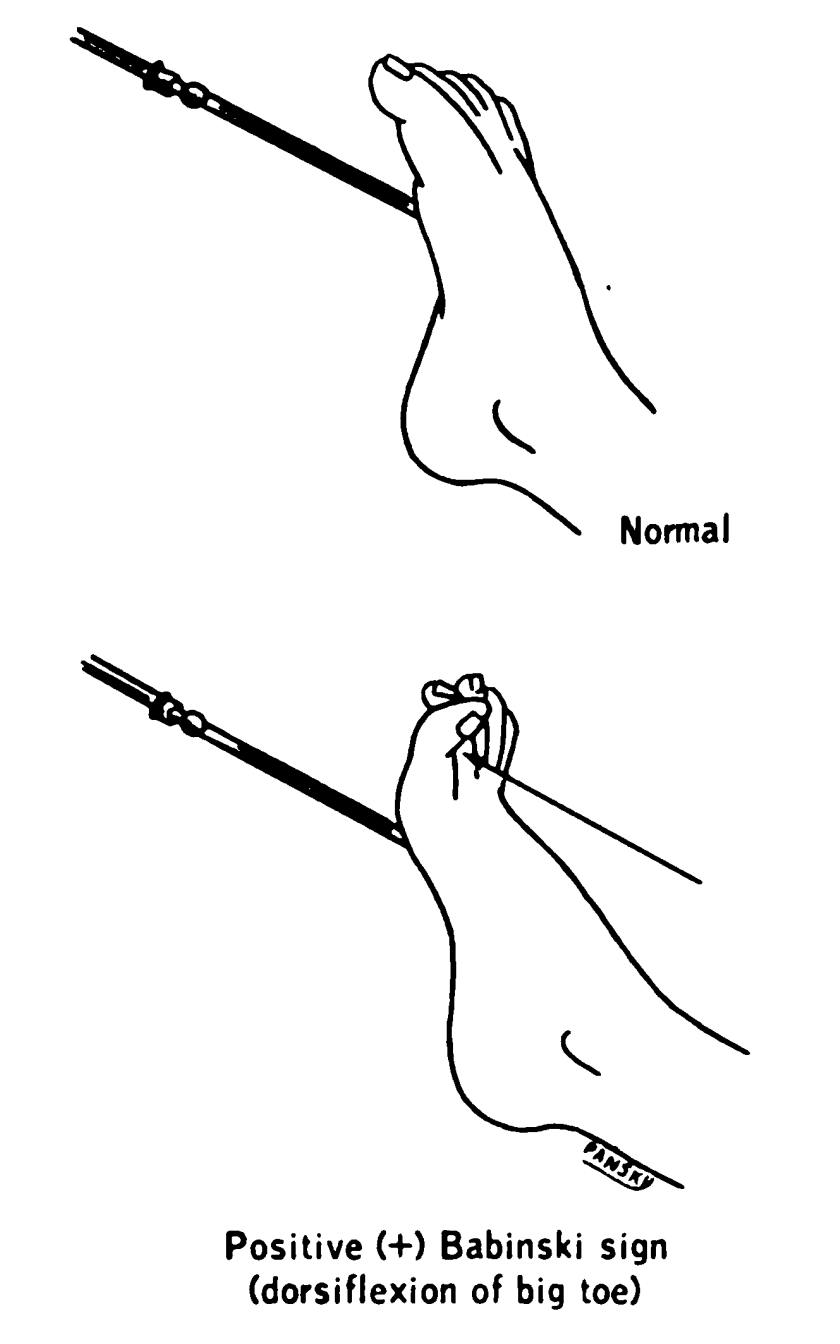Continuing Education Activity
The Babinski reflex was described by the neurologist Joseph Babinski in 1896. Since that time, it has been incorporated into the standard neurological examination. The Babinski reflex is easy to elicit without sophisticated equipment. Since it is a reflex, it does not require active patient participation and, therefore, can be performed in patients who are otherwise unable to cooperate with the neurological exam. This activity describes the Babinski reflex test technique and how to interpret the results. This activity highlights the interprofessional team's role in managing patients with upper motor neuron lesions.
Objectives:
Assess how the Babinski reflex test is performed.
Identify the physiologic pathway of the Babinski reflex.
Evaluate the clinical relevance of the Babinski reflex.
Communicate how the facilitation of interprofessional team education and discussion can optimize the effective performance of the Babinski reflex test and inform the need for subsequent evaluations.


